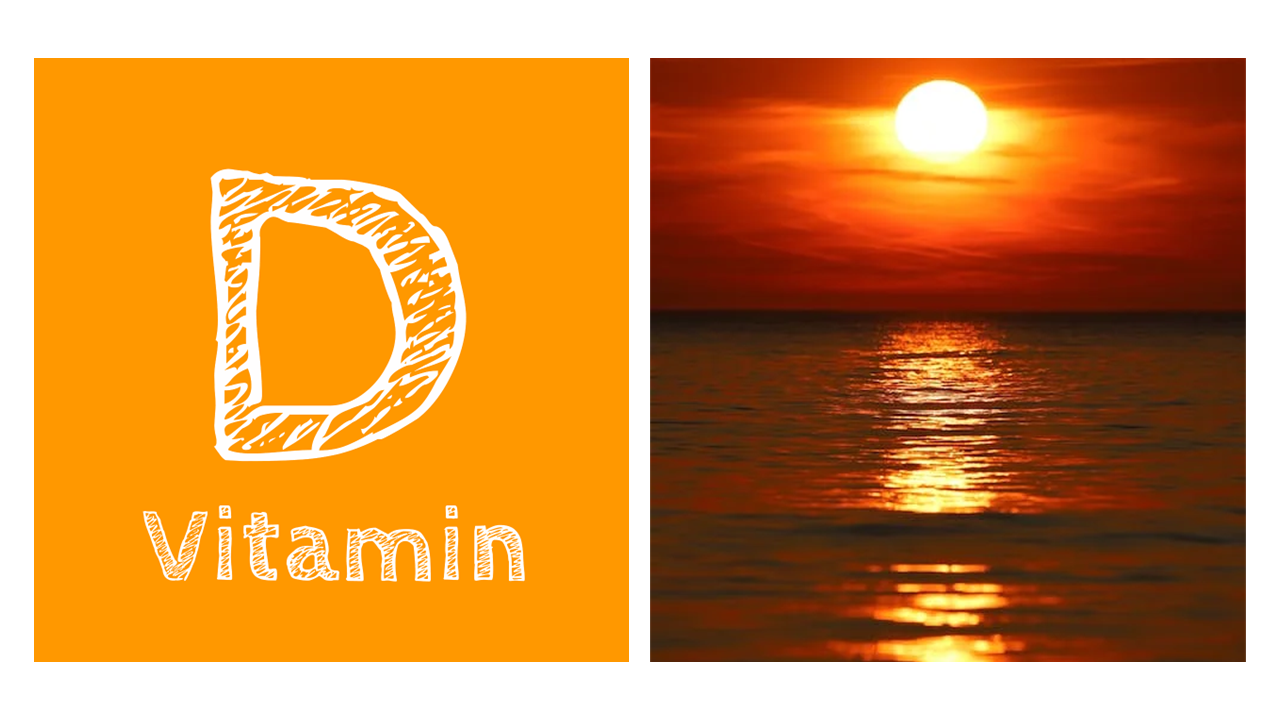Vitamin D and sunlight are two terms that seem to be married to each other! We all have read multiple times that sunlight produces Vitamin D in skin. This statement has somehow become a foundational proof to the argument that there is a pandemic of Vitamin D deficiency globally. Proponents of Vitamin D deficiency pandemic argue that sunlight is low in many parts of the world. They claim that even in tropical countries people are nowadays mostly indoors due modern ways of living, and hence exposure to sunlight not enough. Since sunlight exposure is key to Vitamin D production , hence, there has to be a widespread deficiency of Vitamin D globally.
And the whole argument seems credible when we find that nearly everyone around us have very low Vitamin D levels in blood. But if we dig deeper into how Vitamin D levels are defined, suddenly we will find holes in the whole argument. Earlier, I have discussed in great details on this- please click HERE to read that article.
Now, in this article, I will present a scientific argument that people who live in zones with less sunlight actually need less Vitamin D compared to those who live in tropical countries where there is abundant sunlight.
I will also criticize my arguments, wherever possible, so that the conclusions remain fair and unbiased.
Table of Contents
We Get What We Need- That’s Evolution
The story of human evolution is one of remarkable adaptability, directed by a intricate interplay of genetics and environment. Our ability to live optimally in the places where our ancestors have been traditionally living is a testament to the transformative power of evolution.
As products of evolution, humans are exquisitely attuned to their specific environments. Through successive generations, our ancestors developed mechanisms that optimized our ability to survive and flourish in the places where we are born. This intricate dance between our genetic makeup and our surroundings ensures that we, as individuals, are perfectly suited to the nutrition and environmental conditions of our birthplaces. We tend to thrive best amidst the unique nutrition and environmental conditions- including level of sunlight- available in our birthplaces.
However, what may be optimal for one person in their native region could be detrimental to another who is not native to that region. No wonder a white skin gets inflamed quickly under hot sun, and is prone to contract skin cancer. (1)
For example, populations residing in hot and humid regions, such as sub-Saharan Africa, have evolved mechanisms to cope with high temperatures. They may have sweat glands that produce more sweat and a higher sweat rate, which aids in evaporative cooling. In contrast, individuals from cooler climates may not have the same level of heat tolerance, making them more susceptible to heat-related illnesses in hot regions. Runners from Africa outperform Caucasians in hot and humid conditions. But in colder environments, Caucasian runners tend to perform better. (2)
I was born in India, where my ancestors lived for over thousands of years. My genetic make- up is well suited to survive optimally under hot blazing sun. Similarly, for someone born in Sweden and whose ancestors traditionally lived in Sweden, his/her body is well adapted to thrive optimally under low sunlight conditions.
At this point I want to be a critic to my above argument. The climatic conditions we live in are generally very different from where our ancestors were born. So, to start with, we might not be optimally adapted to the location we currently live in.
We are changing faster than what evolutionary forces can account for. Globalization and modern lifestyle has ensured that. In modern times, it has become very easy today for people to migrate and settle in different countries. Daily, we eat foods that were never available to our ancestors. We live in temperatures and climatic conditions to which our ancestors were never exposed to. And these changes that we make our body to face today can happen in matter of days. In contrast, evolution takes thousand of years to confer relevant adaptations. And this contrast is one of the primary causes of accelerated biological aging leading to chronic diseases like diabetes, hypertension, cancer, autoimmune diseases etc.
Inflammation From Sunlight Triggers Vitamin D Production
We all know that sunlight leads of production of Vitamin D. A little search on google will show you scores of articles elaborating how sunlight leads to formation of Vitamin D. But, did you ask- “why did we evolve to produce Vitamin D when exposed to sunlight?”
The answer to this question unveils when we understand that Vitamin D is actually a defense chemical. When an injury occurs, be it a cut, fracture, infection, or any other form of tissue damage, our bodies instinctively respond by increasing vitamin D production. (3)
Vitamin D is the gas on which the car of our our defense system runs. Intriguingly, exposure to sunlight can be likened to causing low-level injury to our body. As sunlight reaches our skin, it triggers the formation of reactive oxygen species and causes injury at cellular level. This injury serves as a catalyst for increased vitamin D production. Our defense to any injury is always manifested as a series of responses collectively known as inflammation. Vitamin D is a key fuel need to drive inflammation. More the sunlight, more will be injury and hence more will be the inflammation. Hence, more the sunlight, more will be the production of Vitamin D. This seemingly “injurious” exposure to sunlight simultaneously activates the body’s defense mechanisms and activates vitamin D production. (4)
Understanding Implications
Low sunlight causes low inflammation. Thus people who live in countries where sunlight is low actually would need much lower Vitamin D that people who live in tropical countries. It is an error to define same range of Vitamin D levels for all as normal. What is high for someone can be low for someone else and vice-versa.
It is technically incorrect that if someone has white skin, he/she should strive for “extra” sunlight exposure. This belief is perhaps dangerous as well, and can expose to the dangerous risk of contracting skin cancers. (2)
Once you understand that Vitamin D production is the fuel that drives inflammation, it is easy to understand that if there is chronic inflammation of high degree it will lead to “true” Vitamin D deficiency. It is an unfortunate truth that we, as a generation, we are biologically aging faster. This is the main reason why diseases of chronic inflammation (like diabetes, hypertension, autoimmune diseases, cancer etc.) are happening more commonly and at an earlier age than before.
So, while it is true that there is big scientific error in our definitions regarding normal Vitamin D levels, we may well be truly deficient in Vitamin D levels due to accelerated biological aging. (5)
Does that mean we should all start taking Vitamin D supplements? My answer to this is NO. If Vitamin D is the fuel on which the fire of inflammation burns, what if adding Vitamin D is simply adding fuel to fire? In diseases of chronic inflammation, you would want to douche the fire- not aggravate it. We need adequate levels of Vitamin D- not more, not less. Both extremes are harmful. (6) And, most likely, we might be overloading ourselves with unnecessarily high doses of Vitamin D assuming that we have Vitamin D deficiency. It is very hard to assess if that assumption is true. But the current definition of “normal” levels is highly controversial. (7) Most evidences now point to the fact that taking high dose Vitamin D supplementation does not prevent any of the chronic diseases. (8) (9)
Concluding Points
- Level of sunlight optimal for one person can be harmful to someone else.
- Injury triggers Vitamin D production.
- Sunlight causes injury at cellular level, and hence triggers Vitamin D production. More the level of sunlight, more will be the production of Vitamin D.
- People who live in countries where sunlight is low actually would need much lower Vitamin D that people who live in tropical countries.
- We need normal and appropriate levels of Vitamin D. More or less- both extremes can be harmful.
- It is an error to define same range of Vitamin D levels for all as normal. What is high for someone can be low for someone else and vice-versa.
- Diseases of chronic inflammation like diabetes, hypertension, autoimmune diseases, cancer etc. lead to “true” Vitamin D deficiency. Treating this with Vitamin D supplements might be counter- intuitive as it can propagate inflammation further rather than decreasing it.
- It is very difficult asses what is normal Vitamin D level of anyone. Current definitions are extremely controversial. Please click HERE to understand this in detail.
References
- https://www.ncbi.nlm.nih.gov/books/NBK321115/ Institute for Quality and Efficiency in Health Care (IQWiG). (2018, November 29). What increases your risk of non-melanoma skin cancer? InformedHealth.org – NCBI Bookshelf.
- Marino, F., Lambert, M., & Noakes, T. D. (2004). Superior performance of African runners in warm humid but not in cool environmental conditions. Journal of Applied Physiology, 96(1), 124–130. https://doi.org/10.1152/japplphysiol.00582.2003
- Mangin, M., Sinha, R., & Fincher, K. M. (2014). Inflammation and vitamin D: the infection connection. Inflammation Research, 63(10), 803–819. https://doi.org/10.1007/s00011-014-0755-z
- Knuschke, P. (2021). Sun exposure and vitamin D. Current Problems in Dermatology, 55, 296–315. https://doi.org/10.1159/000517640
- Yin, K., & Gold, R. (2014). Vitamin D and inflammatory diseases. Journal of Inflammation Research, 69. https://doi.org/10.2147/jir.s63898
- Kuo, C., Kirk, B., Xiang, M., Pilling, L. C., Kuchel, G. A., Kremer, R., & Duque, G. (2023). Very Low and High Levels of Vitamin D Are Associated with Shorter Leukocyte Telomere Length in 148,321 UK Biobank Participants. Nutrients, 15(6), 1474. https://doi.org/10.3390/nu15061474
- Hansen, K. T. (2011). High-Dose vitamin D: Helpful or harmful? Current Rheumatology Reports, 13(3), 257–264. https://doi.org/10.1007/s11926-011-0175-9
- Manson, J. E., Cook, N. R., Lee, I., Christen, W. G., Bassuk, S. S., Mora, S., Gibson, H. L., Gordon, D., Copeland, T. D., D’Agostino, D., Friedenberg, G., Ridge, C. A., Bubes, Giovannucci, E., Willett, W. C., & Buring, J. E. (2019). Vitamin D supplements and prevention of cancer and cardiovascular disease. The New England Journal of Medicine, 380(1), 33–44. https://doi.org/10.1056/nejmoa1809944
- Barbarawi, M., Kheiri, B., Zayed, Y., Barbarawi, O., Dhillon, H., Swaid, B., Yelangi, A., Sundus, S., Bachuwa, G., Alkotob, M. L., & Manson, J. E. (2019). Vitamin D supplementation and cardiovascular disease risks in more than 83 000 individuals in 21 randomized clinical trials. JAMA Cardiology, 4(8), 765. https://doi.org/10.1001/jamacardio.2019.1870






Useful article, thank you. Top article, very helpful.
Best best best..
Thanks for the blog article.Really looking forward to read more. Will read on…
Thank you for the auspicious writeup. It in fact was a amusement account it. Look advanced to far added agreeable from you! However, how could we communicate?
My brother recommended I might like this web site He was totally right This post actually made my day You cannt imagine just how much time I had spent for this information Thanks
I do agree with all the ideas you have introduced on your post They are very convincing and will definitely work Still the posts are very short for newbies May just you please prolong them a little from subsequent time Thank you for the post